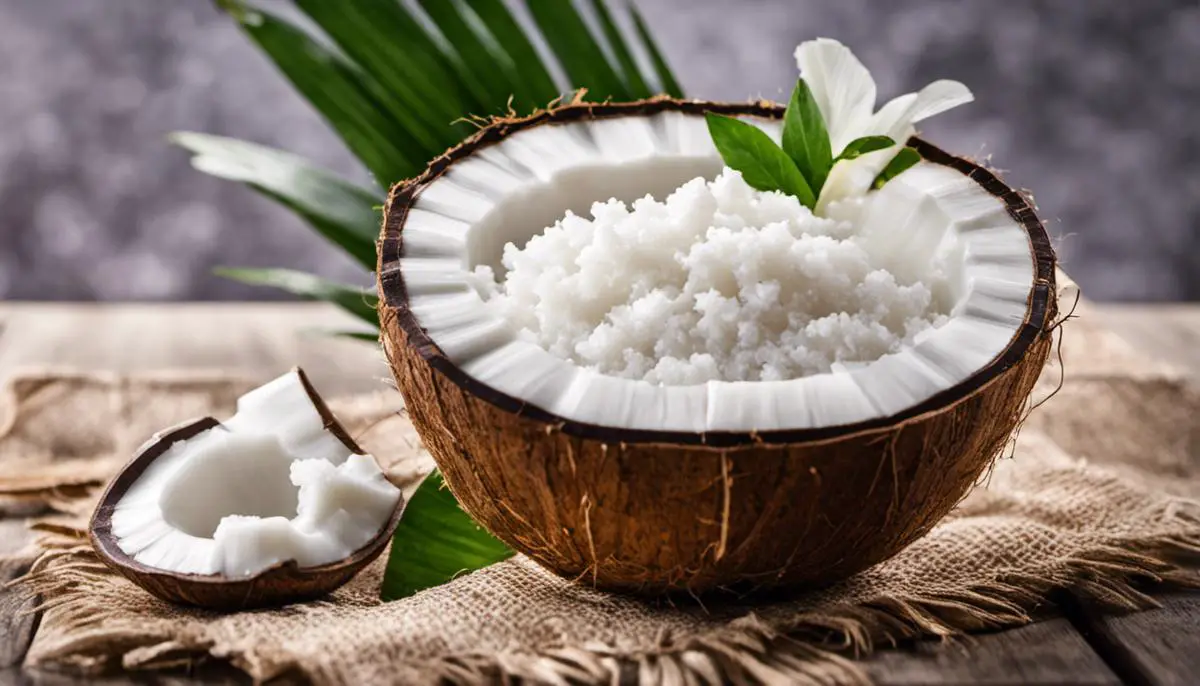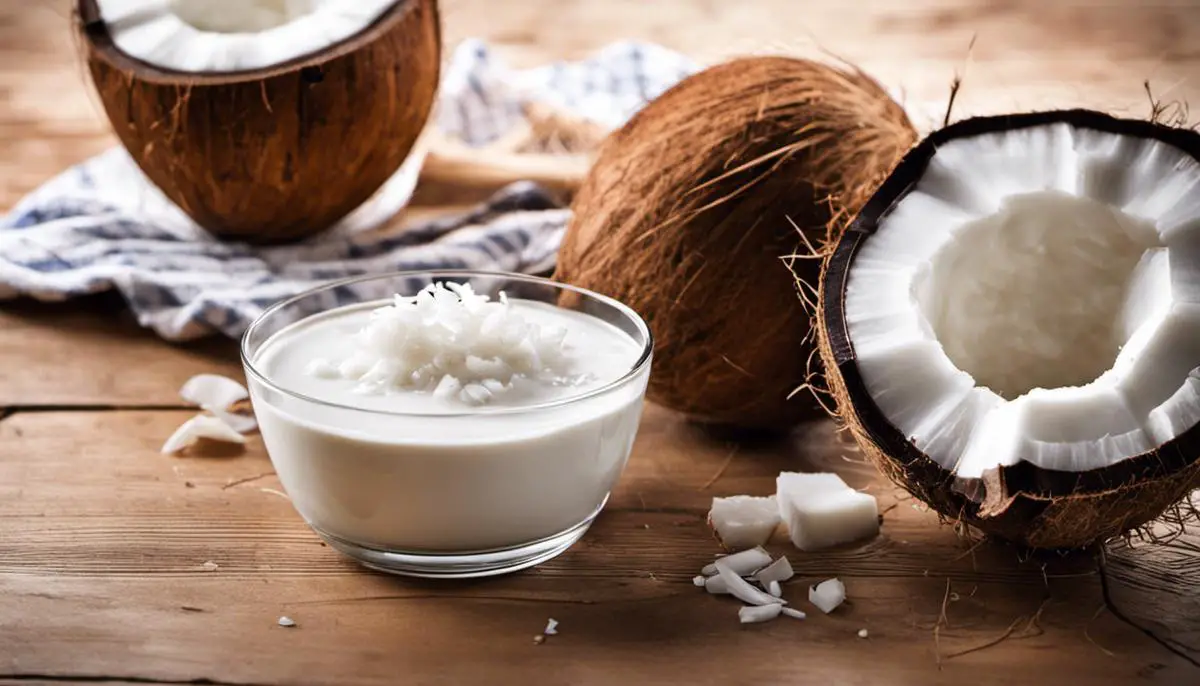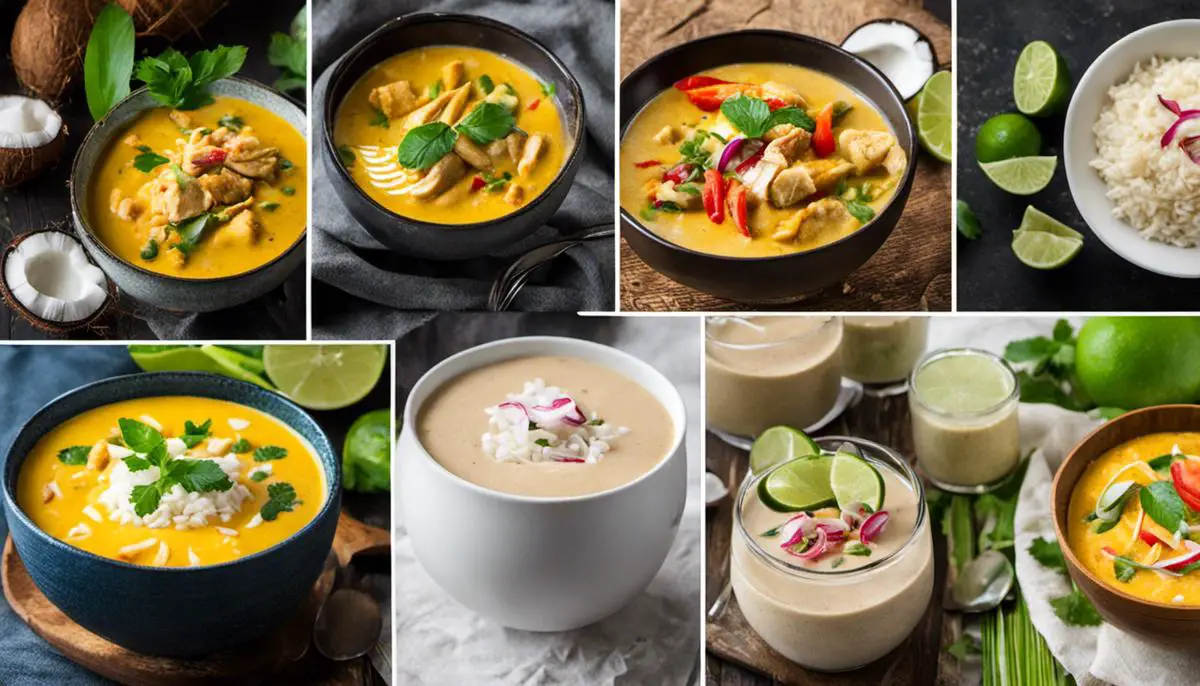Table of Contents
Coconut milk, a versatile and rich ingredient, has been a staple in many cuisines around the globe, from Caribbean to Thai. This essay delves into the origin, variety, and the incredible health benefits of coconut milk. Not only does it help familiarize you with the fundamental differences between coconut milk and cream, but it also provides guidance on how best to select the product that suits your recipe needs. The goal is to unfold the vast potential of coconut milk and plunge into the various cooking techniques surrounding it. Whether you’re simmering a savory curry, a fragrant soup, or a decadent dessert, you will learn how to incorporate coconut milk into your dishes successfully without the predicament of splitting or curdling.
Understanding Coconut Milk
The Origins of Coconut Milk
Coconut milk has deep roots in many cultures worldwide, from coastal regions of India and Southeast Asia to the Pacific Islands and South America. Not to be confused with the watery liquid found inside a coconut, this creamy substance is derived from the flesh of the fruit. The process includes grating the mature coconut meat, soaking it in water, and then squeezing the pulp to extract a rich, thick liquid. This traditional plant-based milk substitute has been used in local cuisines, where it adds a distinctive creaminess and a subtle sweet flavor to a range of dishes.
The Intricacies of Coconut Milk Varieties
Understanding coconut milk can be a challenge due to its differing forms and thicknesses. Varieties range from thick, rich, and dense to thin, light, and more liquid-like. The thickness often depends on the coconut-to-water ratio used during its extraction process. Thick coconut milk is typically used to make desserts and rich sauces, while the light version is utilized for soups and general cooking. Moreover, you may also find coconut cream on the shelves, which elevates the richness to another level. This is due to even less water being used to produce this condensed, creamier variant of coconut milk.
Despite its high-fat content, coconut milk is associated with several health benefits. Potent medium-chain triglycerides (MCTs) found in it may aid weight loss, improve immune function, and have anti-inflammatory effects. Moreover, it’s easy to digest for many and is often recommended as a milk substitute for people with dairy allergies or lactose intolerance. Fortified coconut milk, in particular, might also bring a host of other health benefits like boosted calcium and vitamin B12 levels.
Coconut Milk vs. Cream
When discussing coconut milk and cream, the main differentiating factor lies in their thickness and fat content. While both are made in a similar fashion, the cream is richer and thicker as it contains less water. Consequently, coconut cream is a perfect choice for heavier sauces and desserts, while coconut milk holds its own in lighter dishes and beverages.
Selection of Coconut Milk Products
Selecting the best coconut milk for your recipes involves scrutinizing labels. First and foremost, avoid products with artificial sweeteners or additives. Opt for unsweetened versions to better control the sweetness in your recipes. Search for versions that have a higher percentage of coconut extract for a richer flavor. The list of ingredients should be as minimal as possible, ideally listing only coconut and water. Lastly, ensure the coconut milk is packaged in BPA-free vessels to avoid unwanted chemical leaching.

Cooking Techniques with Coconut Milk
Understanding Coconut Milk
Coconut milk, an essential ingredient in a variety of dishes around the globe, is a creamy, rich liquid derived from the meat of a mature coconut. Its rich flavor and creamy texture make it a unique addition to many recipes. However, its high-fat content can be challenging to cook with as it can easily split or curdle when not handled properly.
Cooking Techniques With Coconut Milk
To prevent coconut milk from curdling, add it towards the end of the cooking process. High heat can cause it to split, so it is best to moderate the heat when incorporating coconut milk. Some people believe that before adding coconut milk to your dish, you should ensure that the rest of your ingredients have cooled down a bit. You should also stir the milk frequently to maintain a stable temperature and prevent it from sticking to the pot or pan.
Using Coconut Milk in Various Dishes
Curry
In making curries, coconut milk serves as a vital ingredient that adds richness and depth to the flavor profile. Start by sautéing your chosen spices, onions, and other aromatics until fragrant. Add your proteins and vegetables, then pour in the coconut milk. Remember to lower the heat before adding the coconut milk to prevent curdling. Simmer it gently, refraining from bringing it to a rolling boil.
Soups
Just like with curry, coconut milk greatly enhances the flavor of various soups. Whether it’s a classic chicken soup or a hearty vegetarian option, coconut milk introduces a creamy note that’s hard to replicate. The process is similar as making curry – sauté your vegetables or meat, then add in your broth. Once the broth is heated, add in your coconut milk while on low heat and stir gently.
Desserts
Coconut milk works great in desserts as well. It’s used in classic desserts like rice pudding, flan, or even ice cream. It’s typically added to the mixture before cooking or churning. The key is to properly mix it with the other ingredients until smooth. Remember, in baking or dessert making, the mixture should never reach boiling point after coconut milk is added.

Innovative Recipes with Coconut Milk
Thai Coconut Curry
While Thai coconut curry may not seem like the most innovative of recipes, trying it with different vegetables and proteins like tofu, beef or different types of seafood, can make a world of difference. Begin by heating oil in a large pot over medium heat. Sauté your choice of protein until it’s fully cooked, then remove it and set aside. In the same pot, add curry paste and cook until fragrant. Add a can of coconut milk, broth, sugar, and fish sauce (you can substitute soy sauce for a vegetarian option). Bring mixture to a boil, then reduce heat and simmer. Add your choice of vegetables and simmer until tender. Add your protein back in and cook until everything is heated through. Don’t forget to serve it over jasmine rice!
Coconut Milk Soup
For a Caribbean spin on soup using coconut milk, try a hearty pumpkin and black bean soup. Start by sautéing onions, garlic, and bell peppers in a large pot until they become tender. Add canned pumpkin, black beans, vegetable broth, and a can of coconut milk into the pot, stirring to combine. Season with salt, pepper, and Caribbean spices like allspice, cinnamon, and nutmeg. Let it simmer for about 20 minutes to let the flavors meld together.
Sweet Coconut Rice
Coconut milk adds richness and tropical flavor to a dessert-worthy version of sweet rice. In a large saucepan, combine jasmine rice, a can of coconut milk, sugar, and salt. Bring the mixture to a boil over medium heat, then reduce the heat to low, cover, and let it simmer for 20 minutes or until the rice is tender. To serve, top with fresh mango slices and a sprinkle of toasted sesame seeds.
Coconut Milk Smoothie
For a refreshing drink, try a coconut milk smoothie. Blend together a can of coconut milk, a banana, a handful of strawberries (or your favorite fruits), a scoop of your preferred protein powder, and a handful of ice. You might also want to add a sweetener like honey or agave syrup. This makes for a refreshing breakfast or post-workout snack.
Coconut Lime Chicken
A one-pan wonder, coconut lime chicken is a versatile dish that pairs well with many side dishes. Start by seasoning chicken breasts with salt and pepper, then brown them on both sides in a hot skillet. Set the chicken aside and in the same pan add garlic, can of coconut milk, lime juice and zest, and a bit of chicken broth. Let it simmer until thickened, then return the chicken to the pan and let it cook in the sauce. You can serve this with cilantro lime rice for added zing.
Each of these recipes showcases a different way to incorporate coconut milk into your cooking, while also offering opportunities to mix things up and make the recipe your own.

The world of cooking with coconut milk opens up a myriad of culinary possibilities. Be ready to dive into a selection of innovative recipes compiled to invite you to experiment and master coconut milk’s uses. These recipes will take you on a gastronomic journey from the spicy kitchens of Thailand to the colorful cuisines of the Caribbean islands. The aptitude to cook with coconut milk will not only enhance your recipe repertoire but also expand your culinary horizons, turning simple meals into unique gourmet experiences. Embrace the challenge and welcome coconut milk as your kitchen companion – an ingredient greatly cherished in households around the world for its rich texture, unique flavor, and impressive versatility.
